Meet Brooklyn’s Internet Bonsai Kingpin
Paul Graviano has been making trees tiny for almost half a century, and does not plan to stop.
Paul Graviano, at home, has bonsais in his backyard and a model train in his basement. (All Photos: Zach Gross)

Paul Graviano does not live in the Brooklyn of waterfront condos and $30 beard trims. He operates his 40-year-old business, Bonsai of Brooklyn, in Gravesend, on the southern tip of the borough, just inland from Coney lsland. Where gentrifying Gowanus has storefronts displaying charming terrariums, Graviano’s tiny trees—Chinese elm, bougainvillea, Japanese red maple, and always, always, always, because they’re the best sellers, juniper, elephant bush, and Hawaiian umbrella trees—hide behind a stalwart fence of corrugated metal. In the winter, they go upstairs, to an insulated room that can fit a couple of hundred trees.
On the other side of the house, there is a photo studio of sorts, where each tree has its picture taken to be posted online. Graviano has cartons of soil here that he makes in a 400-pound cement mixer located in his basement. Other than his own bonsais, most don’t stay long enough to grow appreciably; on the second floor, every room has shelves of boxes, in more than 60 different sizes, in which the trees are shipped off, sometimes two a day, sometimes a dozen.
Since 1976, Graviano has made a business of selling bonsais; his store is one of the oldest in the country. If keeping one bonsai tree requires commitment and care, cultivating a community of bonsai lovers has its own alchemy. In New York, Graviano is one of the secret ingredients.
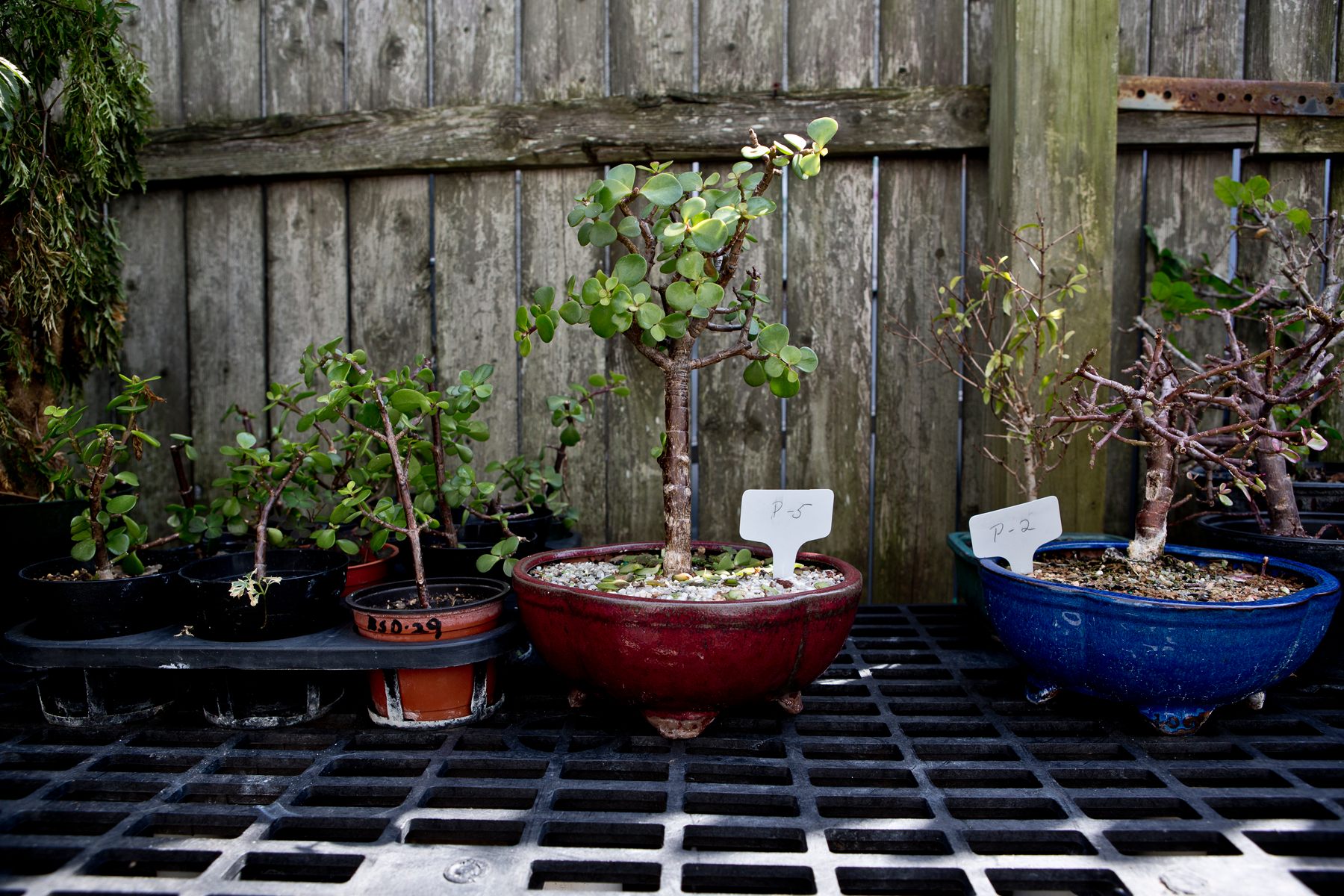
Most of Graviano’s trees don’t stay with him long enough to grow appreciably.
He bought his first bonsai tree in 1964, when he went to buy 49-cent plants for the waterfall he was building below his 125-gallon fish tank. There was a juniper bonsai on the counter. “Have you ever seen something where there was no choice?” he says. “That was it. There was no option.” He wasn’t sure what it was, just that it was a tree and that he had to have it. At $25, it was badly overpriced; he handed over the $15 he had, drove home and came back with the rest.
Trees live on a different scale of time than we do; if they seem timeless, it’s because they grow slowly and long and last beyond human lives. Bonsai trees compress all that into a miniature vista. You don’t have to gaze upwards at the length of a bonsai’s trunk to see its age—in fact, they can appear ageless since size is no arbiter of time on Earth. But at this scale, it’s also possible to see more clearly the influence of a person, or people, since bonsais can be passed down for centuries.
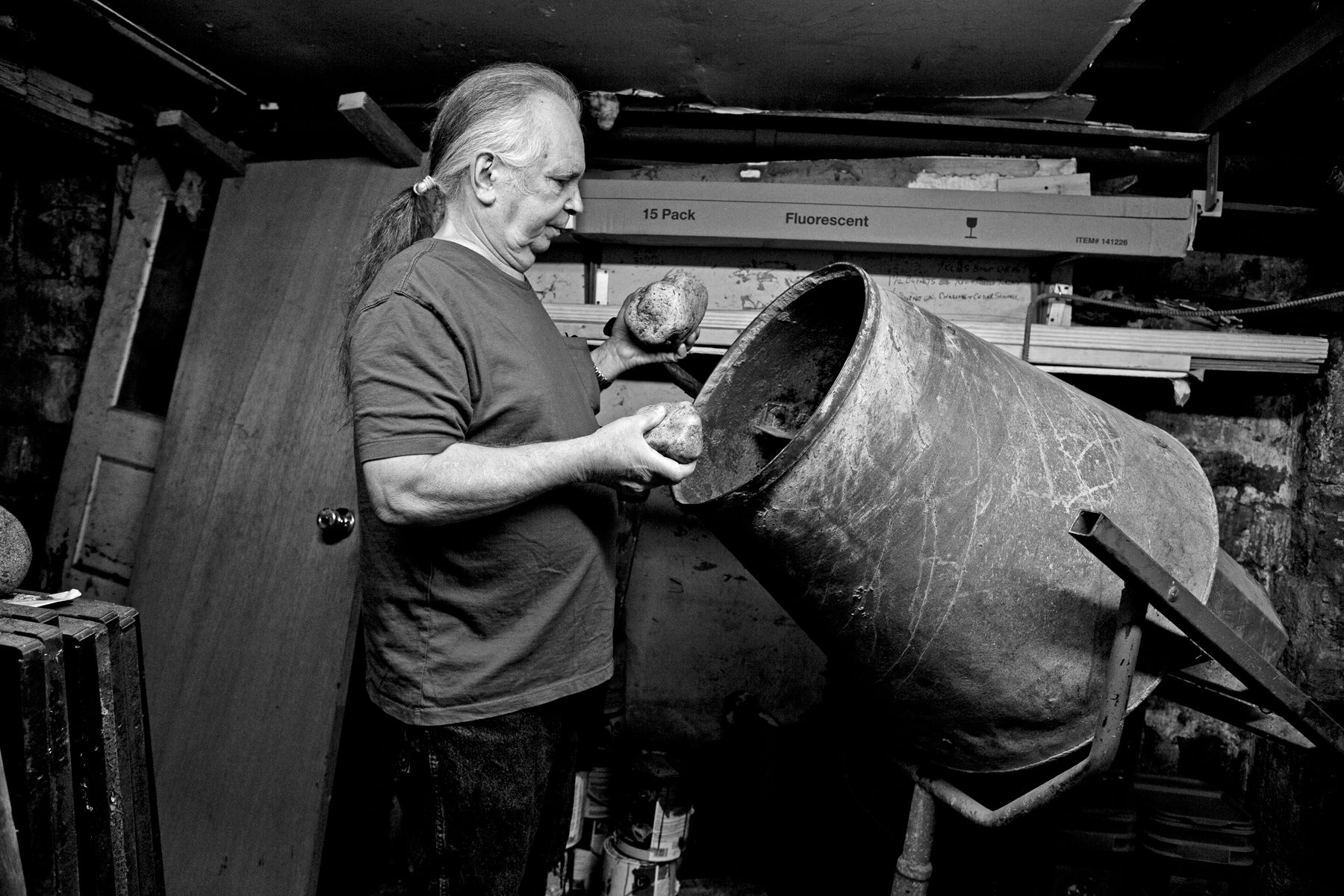


He mixes soil in a cement mixer in the basement.
One of the very first bonsai trees that Graviano ever made himself was an Alberta spruce, with a trunk as thick as his thumb. He stripped off most of the needles and cut off more than half of the branches, wiring them down, in pursuit of the sweeping look of a tiny Christmas tree. When he was done, he started worrying.
Like a teen with a set of tweezers and rapidly growing eyebrows, he had gone too far.

Graviano has been selling bonsai trees, full-time, since 1976.
Bonsai themselves need not be dwarf trees; they can be made from the same seeds that would grow tall, if not for the meticulous trimming, shaping, and sometimes grafting. The tradition is thought to have originated in China, although it really took off in Japan starting in the 7th century. In the ‘60s, there were only a small number of bonsai enthusiasts in America (the American Bonsai Society wasn’t formed until 1967), and even fewer in South Brooklyn. Graviano took the tree to Al, who sold bonsai pots at his nursery and who told him not to worry about the spruce. In 20 years time, he said, it would be gorgeous.
“I burst out laughing because I was 22 at the time,” says Graviano, now 73. “It was my lifetime, basically.”
Within a few years, though, the tree was beautiful, and he had sold it. By then, he had other spruces. Five years after buying the juniper, he had filled a two-car garage, converted into a greenhouse, with the bonsai he was making. “I’m a pretty obsessive person,” he says. (Currently, he is making his way through the entire run of “Friends,” a couple DVRed episode per night; he buys steaks by the half-dozen, cut an inch and a half thick, the perfect size for the charcoal grill he built in the backyard; in his basement, there is an extensive model train containing Coney Island, snowy mountains, and the elevated F train that runs by the old Bonsai of Brooklyn storefront.) To make room for more trees, he sold some for the first time, at a flea market in the parking lot of Aqueduct Racetrack. The market opened around 9 a.m.; they were sold out by 11 a.m.
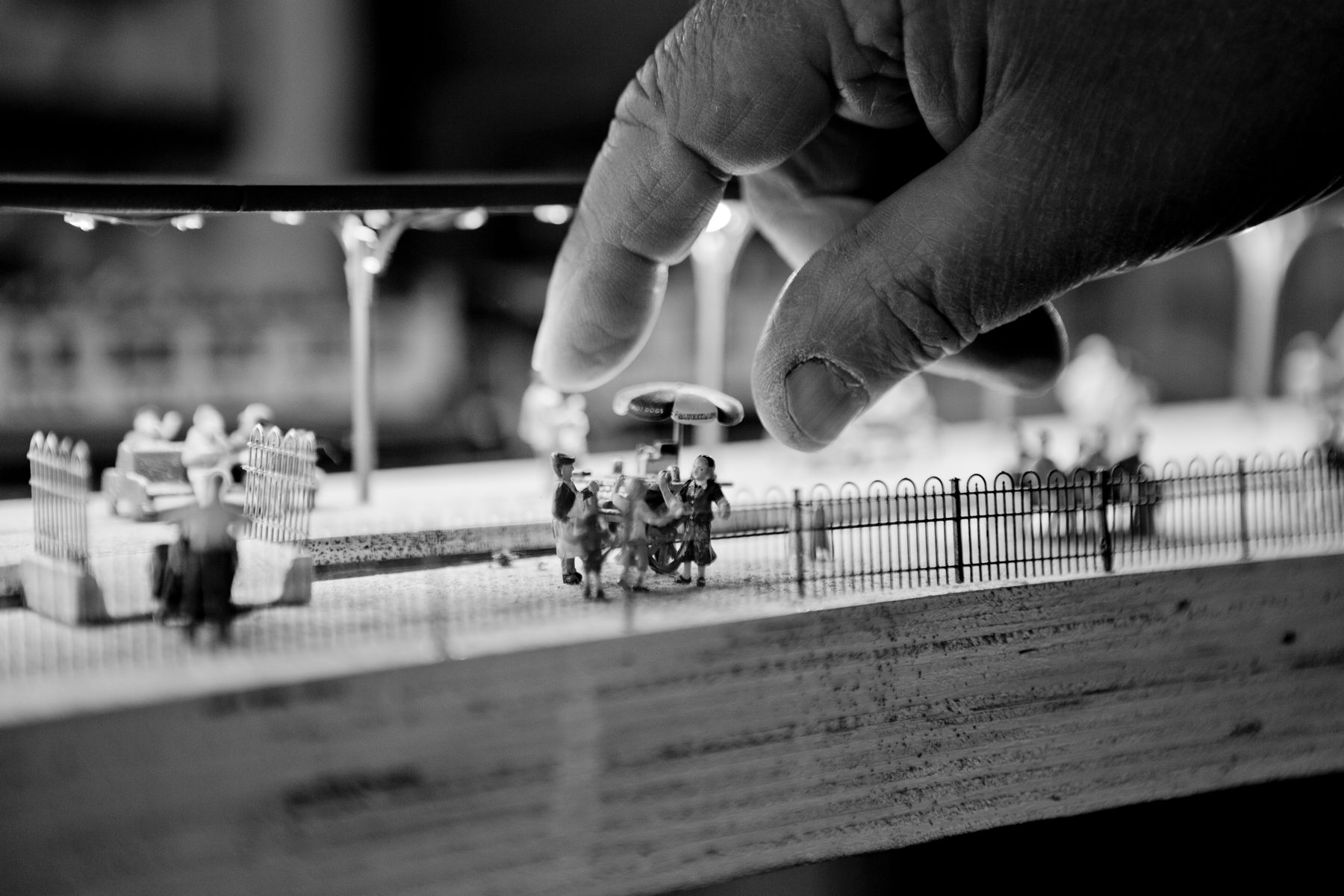
The train set is another miniature world he created.
It was then that he started making bonsai with the intention of selling them. At first, it was still a hobby, like the band that practiced in his basement, covering Chuck Berry, Creedence, and a lot of Grateful Dead. He was doing well, financially, in his day job as a insurance salesman, with a summer house, a new car, a boat. But he was unhappy. He opened his bonsai store after he had a nightmare about one of his policyholders who he didn’t much care for. The next day, wearing dungarees and a t-shirt, he walked into the office to give his two weeks notice. Fifteen years ago, when the packing peanuts and boxes necessary for online retail overran the physical store, he moved everything to his home.
His personal collection is much smaller than you might think. Since Graviano started Bonsai of Brooklyn, he divorced, remarried, moved the store, quit smoking, started his website, closed the physical store, was diagnosed with lung cancer, survived. In 2004, when doctors told him his cancer was terminal and inoperable, before he found a surgeon who told him he’d be fine, he sold all of his trees. A pine went for $5,000. He kept only one, from his personal collection, which he’s had since 1985, and it wasn’t until this year that he added three more to his stash.

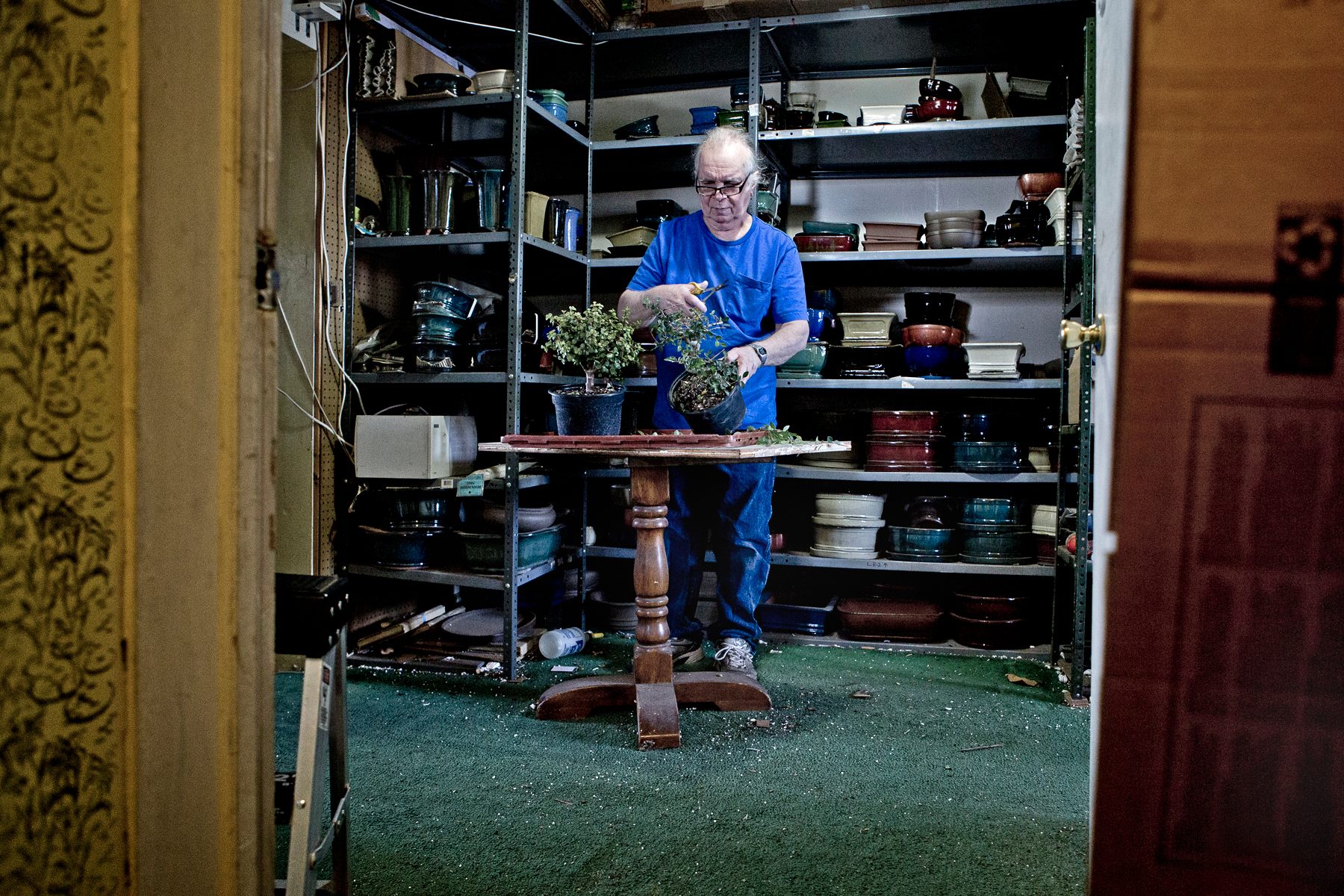
Repotting a tree is easy, if you know what you’re doing, he says.
“It was just trees where I looked at them and said — I don’t want to sell this one,” he says. One was a Chinese elm. Two years ago, it almost died. Last year, it got even worse, and he was ready to toss it. “Maybe because of what happened to me,” he says, he gave it a chance. This year, about a quarter of the branches started putting out new growth and by the time he finished cleaning it up and trimming the good branches down, he had decided it was worth keeping. The next one, a bougainvillea, he’d had for three or four years; when he got around to trimming it, he decided, again—this one is mine.
“I just liked it,” he says.
Graviano has never been to Japan, where the art of bonsai has been refined over thousands of years; he would like to visit Hawai’i, although his last vacation was in 1996, a cruise. He was born in Brooklyn, after all. “I like to hang out here,” he says. “I’m very happy where I am.” He has his bonsai trees in the backyard, his thoroughly and beautifully equipped kitchen on the first floor, his model train in the basement. It is a small world of small worlds, thriving, carefully tended, expansive in their limits.

Every day, he sends off anywhere from two to a dozen trees.



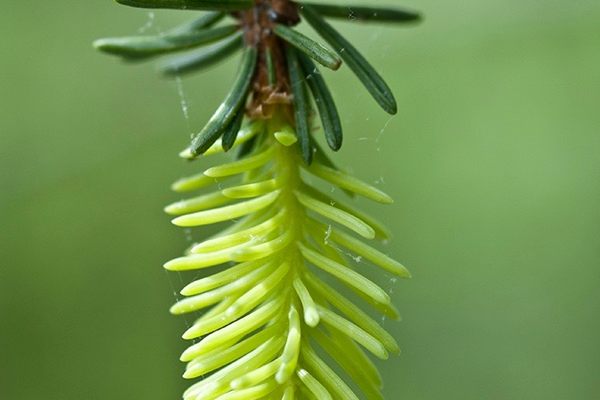














Follow us on Twitter to get the latest on the world's hidden wonders.
Like us on Facebook to get the latest on the world's hidden wonders.
Follow us on Twitter Like us on Facebook